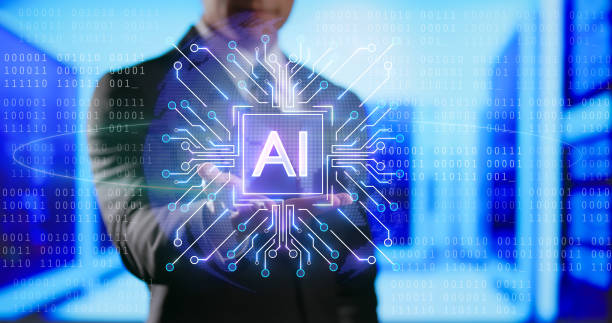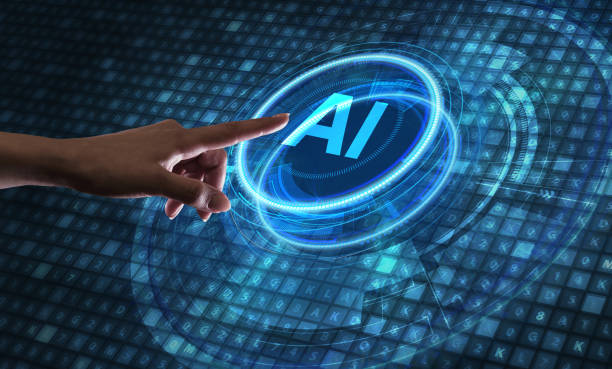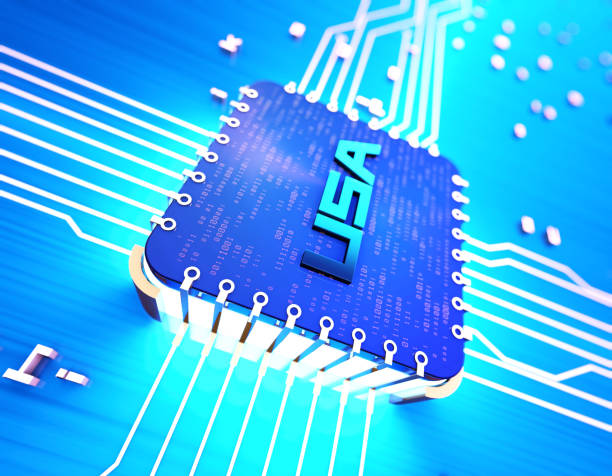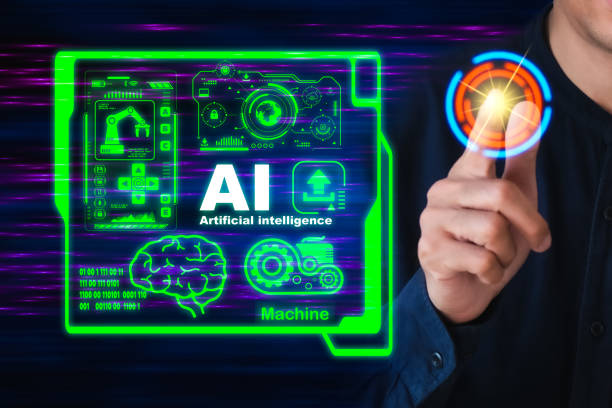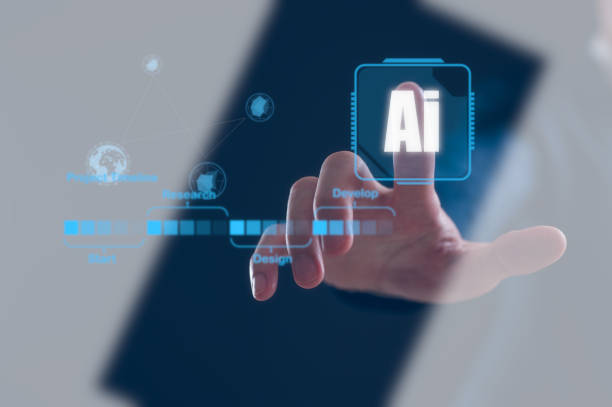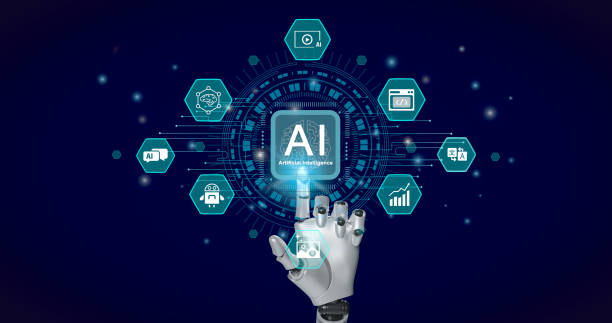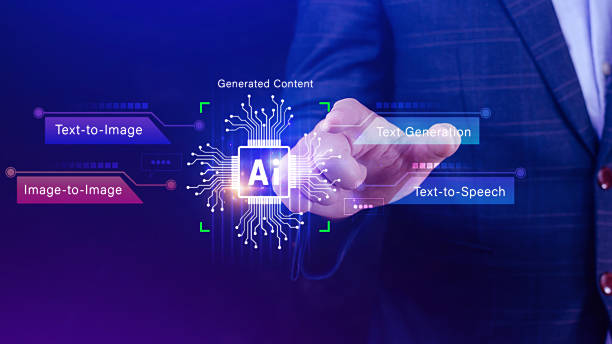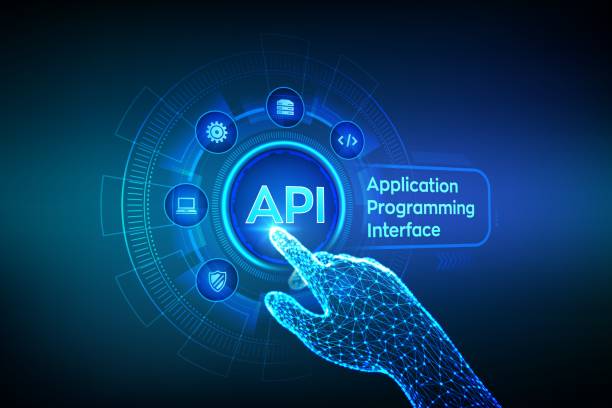What is an Artificial Intelligence Robot and How Does It Work?
In today’s world, the term Artificial Intelligence (AI) is increasingly heard. But what exactly is an Artificial Intelligence Robot? Simply put, an AI robot is a computer system or software program designed to mimic human cognitive abilities. These abilities include learning, problem-solving, understanding natural language, recognizing patterns, and making decisions.
How does an Artificial Intelligence Robot work? These systems use complex mathematical and statistical algorithms and models that allow them to learn from data and make decisions. The learning process is usually done using a lot of data (training data) which helps the system identify patterns and relationships in the data. For example, an #ArtificialIntelligence robot for image recognition can learn to distinguish between cats and dogs by observing millions of images of cats and dogs.
The main components of an Artificial Intelligence Robot are machine learning algorithms, artificial neural networks, and natural language processing. Machine learning algorithms allow the system to learn from data without explicit programming. Artificial neural networks are models inspired by the structure of the human brain and are used to solve complex problems. Natural Language Processing (NLP) allows the system to understand and interact with human language. Artificial Intelligence Robots are used today in a wide range of applications, including self-driving cars, virtual assistants, facial recognition systems, and fraud detection.
Are you losing business opportunities because of an old website? With Rasaweb, solve the problem of not attracting potential customers through your website forever!
✅ Attract more high-quality leads
✅ Increase brand credibility in the eyes of customers
⚡ Get free consultation for corporate website design
Types of Artificial Intelligence Robots and Their Applications
Artificial intelligence robots can be divided into different categories based on their abilities and applications. One of the most common classifications is to divide them into limited and general Artificial Intelligence Robots. Limited Artificial Intelligence Robots (Narrow AI) are designed to perform specific tasks and perform very well in their area of expertise. For example, a facial recognition system or a chess-playing robot falls into this category.
Click here to preview your posts with PRO themes ››
In contrast, General Artificial Intelligence Robots (AGI) or strong artificial intelligence aims to mimic general human intelligence. This type of AI robot will be able to do anything that a human can do with the same level of efficiency. However, AGI is still in the early stages of development and we are far from reaching this goal. In addition, Artificial Intelligence Robots can also be classified based on how they learn. Some AI robots use supervised learning, which means they are trained using labeled data. Others use unsupervised learning, where the system must identify patterns without any external guidance. Reinforcement learning is another method in which the system learns by trial and error and receiving rewards or penalties.
The applications of #ArtificialIntelligenceRobot are very broad and diverse. In the healthcare field, AI robots can help in diagnosing diseases, providing personalized treatments, and managing medications. In the manufacturing industry, they can be used to automate processes, control quality, and predict equipment failure. In the financial field, AI robots can be used to detect fraud, manage risk, and provide investment advice. Virtual assistants such as Siri and Alexa are also examples of Artificial Intelligence Robots that we interact with on a daily basis.
Advantages and Disadvantages of Using Artificial Intelligence Robots
Using Artificial Intelligence Robots has many advantages. One of the most important advantages is increased productivity and reduced costs. AI robots can perform repetitive and tedious tasks faster and more accurately than humans. This can lead to increased production and reduced errors. In addition, Artificial Intelligence Robots can work in dangerous and inaccessible environments for humans, such as mines, nuclear power plants, and the depths of the sea. This can increase worker safety and reduce occupational hazards.
Another advantage of using #ArtificialIntelligenceRobot is improved decision-making. AI robots can identify patterns and trends by analyzing large and complex data that are not visible to humans. This can lead to better and more accurate decision-making. However, the use of AI robots also has disadvantages. One of the most important disadvantages is concerns about employment. Automation of processes using Artificial Intelligence Robots can lead to job losses in some industries. This requires careful planning and appropriate policies to manage these changes.
Click here to preview your posts with PRO themes ››
Another disadvantage is ethical issues related to the use of Artificial Intelligence Robots. For example, the decisions of AI robots may be based on algorithms that have hidden biases. This can lead to discrimination and inequality. Also, issues related to privacy and data security are of great importance. For responsible and ethical use of Artificial Intelligence Robots, it is necessary to develop appropriate laws and regulations.
| Advantages | Disadvantages |
|---|---|
| Increased Productivity | Concerns about Employment |
| Reduced Costs | Ethical Issues |
| Improved Decision-Making | Privacy and Data Security Issues |
| Working in Dangerous Environments | Hidden Biases in Algorithms |
Challenges Facing the Development of Artificial Intelligence Robots
The development of #ArtificialIntelligenceRobot faces many challenges. One of the most important challenges is the lack of quality training data. AI robots need a lot of data to learn and improve their performance. If the training data is incomplete, inaccurate, or biased, the performance of the AI robot will also be affected. Collecting and labeling high-quality training data can be very costly and time-consuming.
Another challenge is the complexity of Artificial Intelligence algorithms. Developing algorithms that are capable of solving complex problems and making correct decisions requires high knowledge and expertise. Also, interpreting and explaining the performance of AI algorithms (Explainable AI) is an important challenge. To gain public trust and ensure responsible use of Artificial Intelligence Robots, we need to be able to understand the reason for their decisions.
Issues related to privacy and data security are also important challenges in the development of #ArtificialIntelligenceRobot. AI robots often deal with sensitive and personal data. Protecting this data against unauthorized access and misuse is of great importance. Also, it is necessary to ensure that Artificial Intelligence Robots are resistant to cyber attacks and cannot be used for malicious purposes.
How much does losing business leads due to an unprofessional site cost you? Solve this problem forever with professional corporate website design by Rasaweb!
✅ Increase credibility and trust of potential customers
✅ Easier attraction of new business leads
⚡ Get a free consultation now!
What Will the Future of Artificial Intelligence Robots Be?
The future of #ArtificialIntelligenceRobot is very bright and full of potential. With increasing advances in machine learning, natural language processing, and computer vision, Artificial Intelligence Robots are expected to play a much more important role in our lives in the coming years. One of the most important trends is the development of General Artificial Intelligence Robots (AGI). Although AGI is still in the early stages of development, progress in this area could lead to the creation of systems capable of solving complex problems and performing diverse tasks with the same level of human efficiency.
It is expected that Artificial Intelligence Robots will play a more important role in the field of healthcare. They can help in diagnosing diseases, providing personalized treatments, managing medications, and assisting surgeons in performing complex operations. In the manufacturing industry, AI robots can be used to automate processes, control quality, and predict equipment failure. In the financial field, they can be used to detect fraud, manage risk, and provide investment advice. Self-driving cars are another area where Artificial Intelligence Robots are expected to play a very important role. With the development of sensor, image processing, and machine learning technologies, self-driving cars are expected to become widely available in the coming years.
However, it is necessary to pay special attention to the ethical and social issues related to the use of #ArtificialIntelligenceRobot. To ensure responsible and ethical use of Artificial Intelligence Robots, it is necessary to develop appropriate laws and regulations and provide necessary training to individuals.
Artificial Intelligence Robot and Business Automation
Business automation using Artificial Intelligence Robots is one of the most important trends in today’s business world. AI robots can automatically perform many repetitive and tedious tasks, which leads to increased productivity, reduced costs, and improved service quality. For example, chatbot robots can answer customer questions, solve their problems, and register their orders. This can reduce the workload of employees and allow them to focus on more important tasks.
#ArtificialIntelligenceRobot can be used in different parts of businesses. In the marketing section, they can be used to analyze customer data, provide personalized advertising, and improve conversion rates. In the sales section, they can be used to identify potential customers, track leads, and close deals. In the customer service section, they can be used to answer customer questions, solve their problems, and provide technical support. In the human resources section, they can be used to screen resumes, conduct initial interviews, and manage employee performance. Using AI robots in business automation has many advantages, but it is necessary to pay attention to the challenges related to the implementation and management of these systems. For success in this field, it is necessary to develop a precise strategy, provide the necessary infrastructure, and provide necessary training to employees.
In addition, Artificial Intelligence Robots can help businesses make better decisions. By analyzing large and complex data, they can identify patterns and trends that are not visible to humans. This can lead to better and more accurate decision-making.
Ethical and Legal Issues of Artificial Intelligence Robots
The development and use of Artificial Intelligence Robots raises many ethical and legal issues. One of the most important issues is accountability. If an AI robot causes damage, who will be responsible? Is the robot’s manufacturer, its user, or the robot itself responsible? Answering these questions requires careful consideration and the development of appropriate laws and regulations. Another issue is privacy and data security. AI robots often deal with sensitive and personal data. Protecting this data against unauthorized access and misuse is of great importance.
#ArtificialIntelligenceRobot Bias and discrimination are also important issues in the field of ethics and law of AI robots. AI algorithms may be based on training data that have hidden biases. This can lead to discriminatory decision-making. To prevent this, the training data needs to be carefully reviewed and the algorithms designed to be fair and impartial. Issues related to employment are also of great importance. Automation of processes using AI robots can lead to job losses in some industries. This requires careful planning and appropriate policy-making to manage these changes. For responsible and ethical use of Artificial Intelligence Robots, it is necessary to develop appropriate laws and regulations and provide necessary training to individuals. Also, it is necessary to pay special attention to issues related to privacy, data security, accountability, bias, and discrimination.
In addition, it is necessary to pay attention to issues related to intellectual property rights. Who owns the intellectual property of outputs produced by Artificial Intelligence Robots? Does the robot’s manufacturer, its user, or the robot itself own it? Answering these questions requires careful consideration and the development of appropriate laws and regulations.
The Impact of Artificial Intelligence Robots on Education and Learning
Artificial Intelligence Robots have created profound transformations in the field of education and learning. AI-based educational systems can provide a personalized learning experience for each student. These systems analyze data related to the student’s performance, identify their strengths and weaknesses, and adjust the educational content in a way that suits their needs. For example, an intelligent tutoring system can help students learn foreign languages, mathematics, and science. By providing interactive exercises, instant feedback, and personalized guidance, these systems make the learning process more engaging and effective.
#ArtificialIntelligenceRobot can help teachers with administrative tasks and assess student performance. Automatic grading systems can automatically grade exam papers, which can reduce the workload of teachers and allow them to focus on teaching and guiding students. Chatbot robots can answer student questions and provide them with the information they need. This can help improve students’ access to information and educational resources. Using Artificial Intelligence Robots in education and learning has many advantages, but it is necessary to pay attention to the challenges related to the implementation and management of these systems. For success in this field, it is necessary to develop a precise strategy, provide the necessary infrastructure, and provide necessary training to teachers and students.
In addition, #ArtificialIntelligenceRobot can help create more inclusive and accessible learning environments. Automatic translation systems can translate educational content into different languages, which can help students who do not study in their native language. Text-to-speech systems can make educational content accessible to students with visual impairments. Speech recognition systems can help students with speech problems communicate and interact with others.
| Application of Artificial Intelligence Robots in Education | Description |
|---|---|
| Personalized Education | Providing educational content tailored to the needs of each student |
| Helping Teachers | Performing administrative tasks, assessing performance |
| Access to Information | Answering student questions, providing educational resources |
| Inclusive Learning | Automatic translation, text-to-speech |
Do you have an online store but your sales are not as expected? Rasaweb solves your problem forever by designing professional online store sites!
✅ Significant increase in conversion rate and sales
✅ Unique user experience for your customers
⚡ Click to get free consultation with Rasaweb!
Security of Artificial Intelligence Robots and Solutions to Counter Threats
The security of Artificial Intelligence Robots is one of the crucial topics in today’s world. AI robots are increasingly used in various sectors of society, from self-driving cars to security and financial systems. If these systems are not properly protected, they can be targeted by cyber attacks and cause irreparable damage. One of the most important security threats related to AI robots is malicious attacks on training data. If attackers can manipulate the training data, they can cause the AI robot to learn incorrect or dangerous behaviors. For example, they can cause a self-driving car to not properly recognize traffic signs or a security system to identify innocent people as threats.
#ArtificialIntelligenceRobot Another threat is attacks on AI algorithms. Attackers can use various techniques to deceive AI algorithms and cause them to make incorrect decisions. For example, they can deceive facial recognition or speech recognition systems using fabricated images or sounds. To counter these threats, several security measures need to be taken. One of the most important measures is to protect the training data. It is necessary to ensure that training data is collected from reliable sources and protected against unauthorized access. Also, AI algorithms need to be designed to be resistant to attacks and to be able to detect malicious behaviors.
In addition, intrusion detection and monitoring systems need to be implemented in Artificial Intelligence Robots. These systems can help identify and prevent cyber attacks. Training and awareness raising to users are also of great importance. Users need to be aware of the security risks associated with AI robots and take the necessary measures to protect their systems. Finally, cooperation between cybersecurity experts, AI developers, and governmental and private organizations needs to be strengthened to counter the security threats related to AI robots.
Future Job and Skills Needed in the Field of Artificial Intelligence Robots
The development of Artificial Intelligence Robots has created new job opportunities in various fields. In the coming years, demand for AI, machine learning, data science, and other related fields is expected to increase. Some of the popular jobs in the field of AI robots include AI engineer, data scientist, machine learning engineer, natural language processing specialist, computer vision specialist, and robotics specialist. To succeed in these jobs, it is necessary to acquire several technical and software skills.
#ArtificialIntelligenceRobot The most important technical skills include proficiency in programming languages such as Python, Java, and C++, familiarity with machine learning algorithms, artificial neural networks, and natural language processing, experience working with AI tools and frameworks such as TensorFlow, PyTorch, and scikit-learn, and the ability to analyze and interpret large data sets. In addition to technical skills, software skills are also of great importance. The most important software skills include problem-solving, critical thinking, teamwork, effective communication, and time management. To enter the field of Artificial Intelligence Robots, you can do so by studying in related fields such as computer science, electrical engineering, mathematics, and statistics. Also, you can acquire the necessary skills by participating in training courses and specialized workshops. The most important thing is to always be learning and updating your knowledge, as the field of artificial intelligence is rapidly changing.
In addition, Artificial Intelligence Robots can have a significant impact on other jobs. Some jobs may be completely automated by AI robots, while others will need to adapt to new technologies. To succeed in the future world of work, it is necessary to strengthen learning, adaptability, and innovation skills.
FAQ
| Row | Question | Answer |
|---|---|---|
| 1 | What is an Artificial Intelligence Robot? | An AI robot is a machine capable of understanding, reasoning, learning, and problem-solving, and can perform complex tasks with relative autonomy. |
| 2 | What are the most important applications of Artificial Intelligence robots? | The main applications include industrial production, customer service (chatbots), medicine and surgery, autonomous transportation, space exploration, and military affairs. |
| 3 | What is the main difference between an Artificial Intelligence robot and a regular robot? | A regular robot only follows programmed instructions, while an AI robot can learn from data, make decisions, and adapt to new environments. |
| 4 | How do Artificial Intelligence robots learn? | They identify patterns and improve their performance through machine learning algorithms (such as deep learning, reinforcement learning) and processing a large amount of data. |
| 5 | Can Artificial Intelligence robots have emotions? | Currently, AI robots do not have real emotions in the human sense. They can mimic or recognize emotions, but they do not understand and experience them. |
| 6 | What are the current limitations of Artificial Intelligence robots? | Limitations include the need for a lot of data, the inability to understand abstract concepts, the lack of real creativity, ethical issues, and the challenges of generalizability in new environments. |
| 7 | What is the role of artificial intelligence in the development of Humanoid robots? | Artificial intelligence helps humanoid robots to walk, maintain their balance, understand the surrounding environment, interact with humans, and perform complex tasks. |
| 8 | How is the future of Artificial Intelligence robots predicted? | It is predicted that AI robots will become smarter, more autonomous, and capable of performing more complex tasks in daily life and industry, and their interaction with humans will increase. |
| 9 | Can Artificial Intelligence robots replace all human jobs? | It is unlikely that all human jobs will be replaced. Robots take on many repetitive and dangerous tasks, but jobs that require creativity, empathy, and moral judgment will remain. |
| 10 | What ethical and social challenges arise with the expansion of Artificial Intelligence robots? | Challenges include issues related to privacy, data security, ethical decision-making by robots, impact on employment, and accountability in case of errors. |
And other services of Rasa Web advertising agency in the field of advertising
Smart Marketplace: A combination of creativity and technology to manage campaigns through marketing automation.
Smart UI/UX: A new service to increase customer attraction through SEO-driven content strategy.
Smart Digital Branding: A combination of creativity and technology to improve SEO ranking through attractive user interface design.
Smart Digital Advertising: Transform digital branding with the help of precise audience targeting.
Smart Social Media: A professional solution for digital branding with a focus on optimizing key pages.
And more than hundreds of other services in the field of internet advertising, advertising consulting, and organizational solutions
Internet Advertising | Advertising Strategy | Advertorial
Resources
Google unveils Gemini Ultra AI model with multimodal capability
,Applications of using artificial intelligence in everyday life
,What is the second step of artificial intelligence?
,Artificial intelligence is shaking the Iranian labor market
? Are you ready to boost your business in the digital world? Rasaweb Digital Marketing Agency, with services such as website design with modern user interface, professional SEO, and social media management, paves the way for the growth and brilliance of your business in the online space. Contact us now for a free consultation and to learn more about our services.
📍 Tehran, Mirdamad Street, next to the Central Bank, Southern Kazerun Alley, Ramin Alley No. 6
“`

